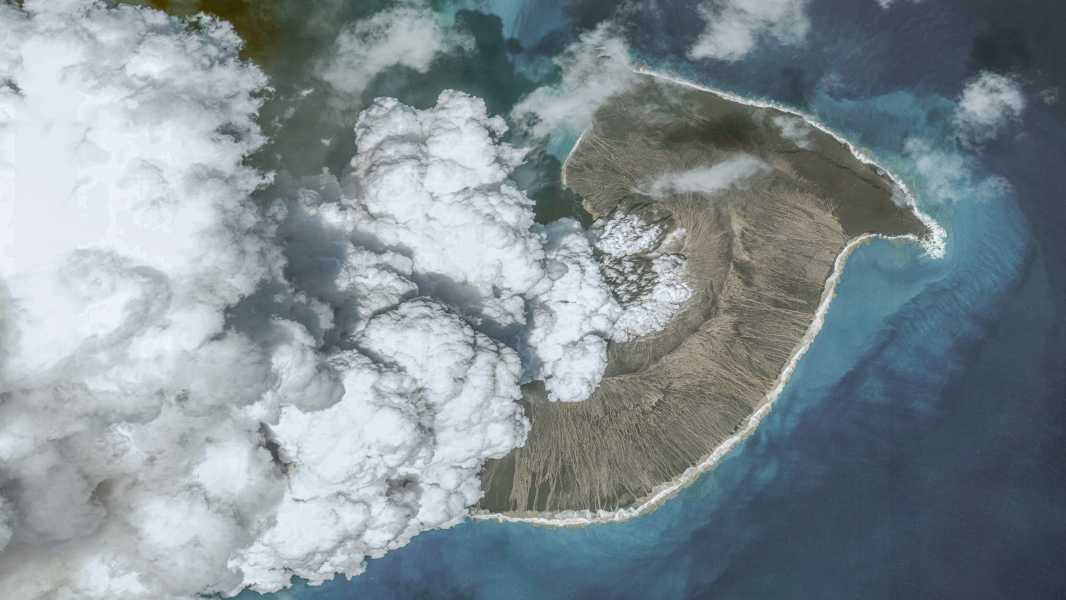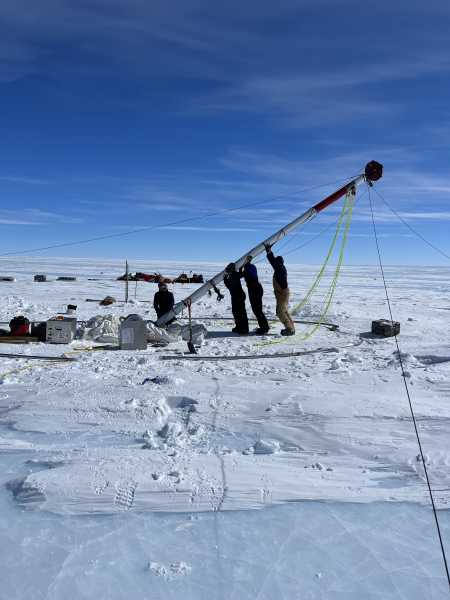
Researchers find that the eruption of the underwater volcano Tonga triggered the megatsunami (Photo courtesy of NASA)
The eruption of the Tonga underwater volcano was comparable in power to the most powerful US nuclear bomb and caused a “megatsunami” close to the height of a 30-story building, according to a recent study.
On January 15, 2022, a massive eruption occurred at Hunga Tonga-Hunga Ha'apai, a large cone-shaped mountain located near the islands of the Kingdom of Tonga in the South Pacific Ocean. The eruption produced the tallest volcanic cloud ever recorded, reaching 35 miles (57 kilometers) in height. The eruption generated a tsunami that reached as far as the Caribbean Sea, as well as atmospheric waves that circled the globe several times.
To estimate the severity of the eruption, scientists collected satellite optical and radar images before and after the eruption, drone maps and field observations to create a computer model of the disaster.
They found that the blast could have yielded up to 15 megatons (million tons) of TNT, which is roughly the same as the most powerful nuclear explosion in the U.S., Castle Bravo, which occurred in 1954, according to the Atomic Heritage Foundation. That also makes the eruption “the largest natural explosion in more than a century,” lead study author Sam Perkis, a professor and chair of the Department of Marine Geosciences at the University of Miami Rosenstiel School of Marine and Atmospheric Sciences, told Live Science in an email.
The eruption triggered at least five explosions, creating a tsunami up to 279 feet (85 m) high just a minute after the largest blast. That led to waves up to 147 feet (45 m) high on the Tongan island of Tofua and 55 feet (17 m) high on the island of Tongatapu, the researchers found.
“Our data confirms that the waves generated by the explosion definitely put Hunga Tonga-Hunga Ha’apai in the ‘megatsunami’ category,” said Purkis, who is also chief scientist at the Khaled bin Sultan Living Oceans Foundation in Annapolis, Maryland. “We were able to observe this event in real time with modern instruments that would have been previously only known in ancient times. It’s all very exciting.”
Until now, the scale of the eruption and its effects have remained difficult to understand due to a lack of scientific instruments near the site of the disaster. “Hidden from casual view, underwater volcanoes are much more difficult to monitor than those on land,” Purkis said.

Hunga Tonga-Hunga Ha'apai volcano on December 24, a month before the eruption.
Researched
Sourse: www.livescience.com





